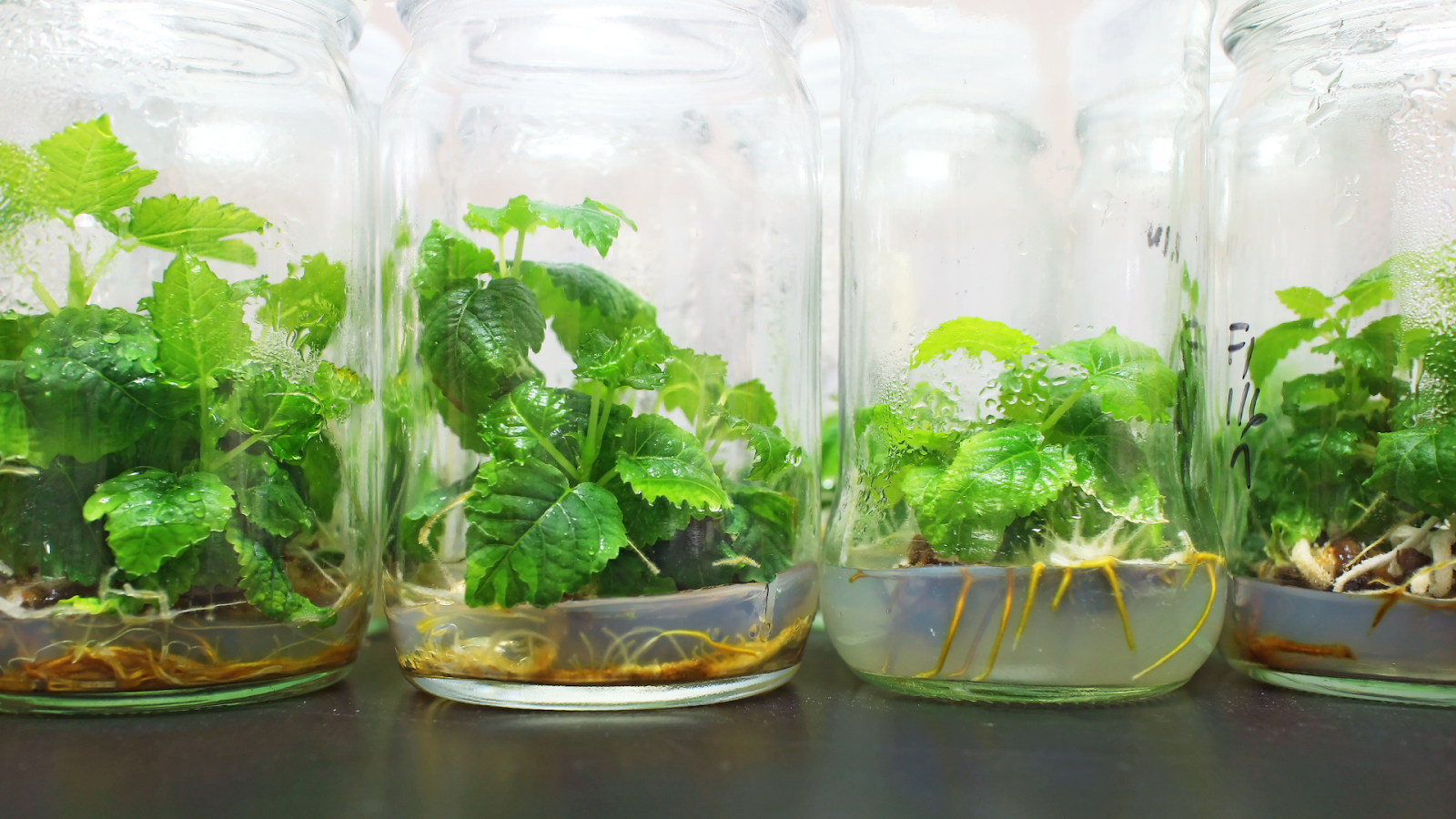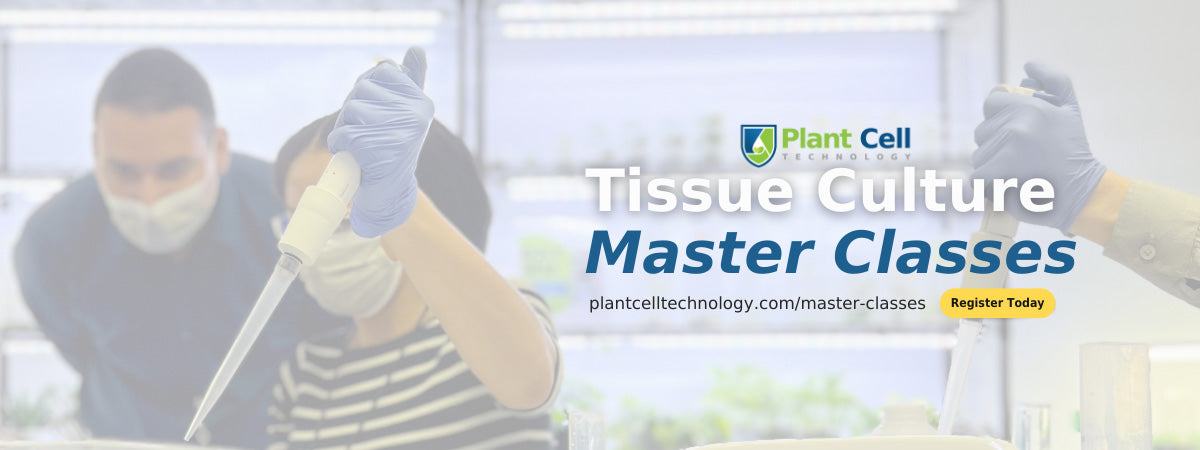
Chitosan: A Biomolecule Promoting Tissue Culture Plants’ Growth
As a content and community manager, I leverage my expertise in plant biotechnology, passion for tissue culture, and writing skills to create compelling articles, simplifying intricate scientific concepts, and address your inquiries. As a dedicated science communicator, I strive to spark curiosity and foster a love for science in my audience.


Introduction
The alternative to sustainable and nature-originated material is now an interest in many areas, including plant tissue culture. The non-toxic, biodegradable, and biocompatible nature of the biomolecule gained the attention of many researchers for its applications in the food industry, cosmetology, agriculture, biotechnology, and medicine.
Days are gone, when just using the traditional media and obtaining a good number of plants were enough. With the increasing population and increased need for food security, we need solutions that provide much better output with lesser failures. Thus, we need to find materials and substance that enhances the growth and development of our in vitro plants’ growth, are affordable and offer a potential solution to other limitations of the tissue culture solution.
In this purist, scientists have begun studying many materials, such as silicone, chitosan, and other nanomaterials that help in vitro applications without posing any threat to humans’ food safety and health.
In this article, we learn more about chitosan, including what it is, its definition, its role in crop improvement, and applications in plant tissue culture.
What Is Chitosan?
Chitosan is a naturally occurring compound found in some aquatic (such as Crab, water lobster, and Krill), terrestrial (such as spiders and beetles), and microorganisms (such as the cell wall of some fungi). Commercially, it’s generally produced from seafood shells.
In structure, chitosan consists of two sub-units, d-glucosamine and N-acetyl-d-glucosamine, linked by 1,4-glycosidic bonds. In other terms, it’s the N-deacetylated derivative of chitin. The biomolecule can be produced by the alkaline deacetylation of chitin.
As a result of its properties of biocompatibility, antioxidant, anticancer, biodegradability, antimicrobial, and non-toxicity as well as its economical nature (ability to be produced from waster resources, such as seafood shells), chitosan has become a popular biopolymer.

Figure: An illustration of the action mechanism of chitosan on microorganisms.
Chitosan's Role In Crop Improvement
Chitosan has been used to induce the defense system in both pre and post-harvest fruits and vegetables against viruses, bacteria, fungi, and other abiotic stresses. The use of the biomolecule as an antipathogen in plants was first reported by Allan and Hadwiger. They demonstrated the fungicidal effects of chitosan on different cell wall compositions of fungi.
Other than acting as bio-fungicide, Chitosan's have also been used to activate the defense system of plants as bio-bactericide and bio-virucide. Furthermore, it’s also a sustainable alternative to industrial fertilizers that devastate the environment and harm human health.
According to studies, Chitosan promotes rhizobacteria growth, triggering germination and improving plant nutrient absorption through its symbiotic relationship with growth-promoting rhizobacteria.
Many chitin derivatives have also been found useful in imparting resistance against microbial diseases and insecticidal activity against various plant pests. For example, chitin derivative (N-2-chloro-6-fluorobenzyl-chitosan) was found to be lethal against the oleander aphid (Aphis nerii) and larvae of leaf-worm (Spodoptera littoralis) of cotton crops.
Additionally, nanochitosans (CSg PAA) have also been found effective as a potential insecticide against the insects of soybean i.e., Aphis gossypii and Callosobruchus maculatus. It significantly reduced the number of eggs deposited by the female.
It has been reported that a chitosan derivative named avermectin-grafted-N,O-carboxymethyl chitosan (NOCC) inhibits armyworms, carmine spider mites, black bean aphids, and brown planthoppers.
It should also be noted that some insects contain chitin in their exoskeleton, which can make these insects resistant to chitosan-based insecticides. Though, to overcome the limitations, chitosan is fed to reared carnivorous insects so they can serve as biological controllers of chitinous pests.
A bio-insecticide based on chitosan would therefore be valuable for horticultural crops.
How Chitosan Is a Potential Biomolecule To Increase Tissue Culture Plants’ Growth?
Tissue culture is an effective technique to grow disease-free plants on large scale. The technique requires complete sterile conditions and a controlled environment. The growth of in vitro plants is assured by the basal medium and plant hormones used in the process.
However, the major limitation of the technique is the expensive equipment and chemicals used in the process. Thus, there’s a need for more sustainable alternatives that can reduce expenses and the use of synthetic compounds. And, organic supplements from natural resources, such as chitosan, can be an interesting alternative.
Chitosan has been reported to promote the growth of in vitro plants, seed germination, and the elicitation of bioactive compounds. However, there’s more to the compound than these applications. And, some of them are listed here!
- In this study, the group of researchers grew Potato virus Y (PVY)-infected plants in different concentrations of chitosan nanoparticles. They found that the concentration of (CS-NPs) from 100 to 250 mg L−1 in the culture medium resulted in positive effects on shoot regeneration. Shoots regenerated on a medium containing 200 mg L−1 (CS-NPs) showed higher growth and developed into complete plantlets. Excellent growth and regeneration shoots were obtained at 250 mg L−1, while at the concentration of 300 mg L−1 phytotoxicity occurred. Further, the study results confirmed that (CS-NPs) was effective in the elimination of PVY from potato.

Figure: Sprouts of Potato Virus Y infected potato explants (Solanum tuberosum L.) cv. Spunta (I) showing shoot regeneration on MS medium supplemented with different concentrations of Chitosan (CS-NPs). Healthy explants (H).
- Chitosan has been tested for the in vitro germination of orchid seeds devoid of symbiosis—usually, orchids need a symbiotic relationship with a mycorrhizal fungus to germinate in the wild.
- The addition of chitosan to the culture media of C. maxima at 250 mg/L promoted the formation of shoots, up to 85% higher than the control, and improved leaf and root number, central leaf width, and root length, for the nodal segment.
- Chitosan stimulated the in vitro growth of Musa paradisiaca cultivar ‘Grand Naine’ and Musa (ABB Group) ‘Kluai Namwa Mali-Ong’ (ABB) (both banana plants), initiated by sucker explants or rhizomes, by improving the number of shoots and roots and reducing the time for shoot development
- A plant's stress response can be stimulated by adding elicitors to the culture media, which can increase the production and accumulation of secondary metabolites or induce new ones. Elicitors can be divided into two categories: biotic and abiotic. Biological elicitors include chitosan, whereas abiotic elicitors are materials of non-biological origin. Cell suspension cultures of Swertia minor (Griseb.) Knobl (lesser swertia) (Kshirsagar et al. 2021) and Catharanthus roseus (L.) G. Don (Madagascar periwinkle) elicited with chitosan showed improved biosynthesis of swertiamarin and two alkaloids (vinblastine and vincristine).
- This study shows that the growth of orchid’s meristem explants into protocorm-like bodies in a liquid medium was accelerated up to 15 times in the presence of chitosan oligomer, the optimal concentration being 15 ppm.

Figure: Effect of various concentrations of fungal chitosan (10 kDa) on the production of plantlets by the fractionated Protocorm-like body’s explant of Dendrobium phalaenopsis cultivated on Vacin and Went (VW) agar media, after 12 weeks of inoculation.
Count On Plant Cell Technology To Meet All Your Tissue Culture Needs

Plant Cell Technology is helping tissue culturists worldwide by providing unique and world-class products and services that smoothen their process. The PCT Store has MS media, agar, gellan gum, Plant Preservative Mixture (PPM™), culture vessels, Biocoupler™, and masks in its store to facilitate your processes.
And, that’s not it! Plant Cell Technology also offers consultation services to culturists of all sizes that help to get instant solutions to your tissue culture problems.
You can either book a one-on-one consultation call or a physical visit to your lab. We help you at every step of the tissue culture process, ranging from establishing a tissue culture lab to preventing contamination problems or any specific challenges in your process.
Further, in the coming month, we are conducting a range of Master Classes for tissue culture enthusiasts like you. The class offers you the great opportunity to directly learn from the experts in the area, who have 10-30+ years of experience.
So, visit plantcelltechnology.com today and learn more about our products and services and how they help you excel in your tissue culture processes.
Happy Culturing!
Blog Categories
View by Level
Popular Blogs

How Bioreactors Cut Tissue Culture Labor by Half
Introduction Have you ever stopped to calculate the true human and resource cost of every single plantlet leaving your tissue...
Read More
When is Somaclonal Variation a Tool, Not a Flaw?
Introduction Somaclonal variation (SV) is a concept that sits at the very heart of modern plant biotechnology. It is formally...
Read MoreSubscribe to Our Newsletter
1 comment
I’m use organic biostimulants in tc, because I need to reuse agar for feed my plants. I see that humic, fulvic, kelp, silica etc. is future of tc production.








Join the conversation
Your email address will not be published. Required fields are marked